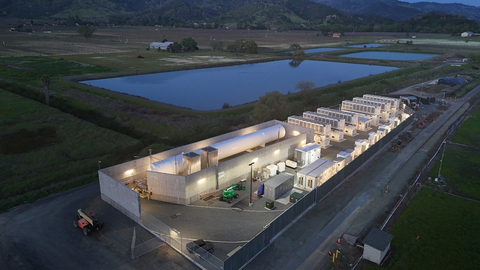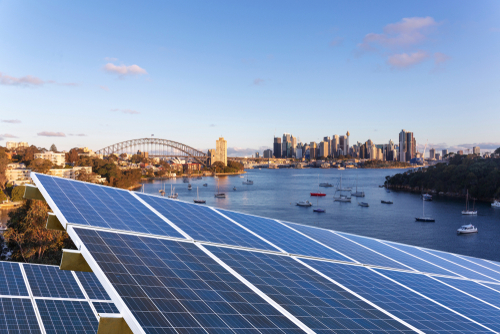
California regulators last week granted the Calistoga microgrid approval to sell output into the wholesale market over the objection of the state’s consumer advocate.
Developed by Energy Vault in partnership with Pacific Gas & Electric (PG&E), the Calistoga Resiliency Center will provide 8.5 MW of peak power and 293 MWh of energy over a 48-hour period using hydrogen fuel cell/lithium battery technology.
The substation microgrid is being built to keep the power flowing to the Calistoga community in Napa Valley during public safety power shutoffs — periods when PG&E shuts off the electricity flow to prevent wildfires.
The microgrid will sell power and grid services to the wholesale market during “blue sky” periods – times when the grid is operating normally and the community does not need the microgrid power.
By selling the grid services, the project can secure an additional revenue stream.
Avoiding idle hours
The state’s public advocate told the California Public Utilities Commission (CPUC) that the microgrid could encounter conflicts in serving both the community and the grid — for example, if it depleted its battery and was unable to deliver power to the community when needed.
PG&E countered that the battery can fully recharge in five hours — well within its 48-hour window to warn of coming power shutoffs. The utility also pointed out that Energy Vault faces penalties if it fails to provide the community with necessary power.
Subscribe to the Free Energy Changemakers Newsletter
The commission backed PG&E’s stand in a July 24 decision, saying that selling into the wholesale market wouldn’t “expose ratepayers to new costs and may offer system-wide benefits.”
Not selling into the market would leave the Calistoga microgrid “idle for the significant majority of its useful life,” the commission wrote.
Energy Vault described the decision as a significant milestone that enhances the project’s financial value and validates its long-duration storage and AI energy management platforms.
Replicable for other fire-prone regions
The California-based company describes the microgrid as a utility-scale hybrid microgrid that can be replicated in other communities prone to wildfire-related power outages.
PG&E selected Energy Vault to build the $46.3 million pilot project in a competitive bidding process that attracted three other companies. The four companies proposed eight microgrids.
The utility said it awarded the contract to the Calistoga microgrid because it “represents a novel combination of multiple generation sources capable of powering an entire substation, with infrastructure owned in part by third parties and in party by PG&E, and it will likely further the transition to cleaner sources of substation microgrid generation.”
In April 2023, the commission has approved the utility’s cost recovery for the project, noting it will not exceed what it would have cost to instead use diesel generators for 20 years. Describing it as a fully renewable microgrid, the commisison said it is expected to reduce particulate matter and nitrogen oxides 90% compared to what would have been emitted by large Tier 2 Diesel Generators
Energy Vault is holding a groundbreaking today (Aug 1, 2025).



